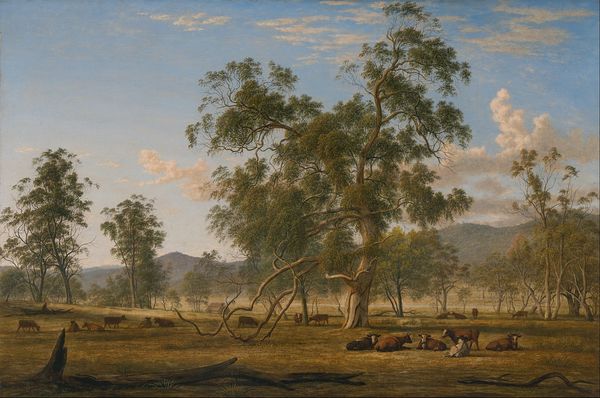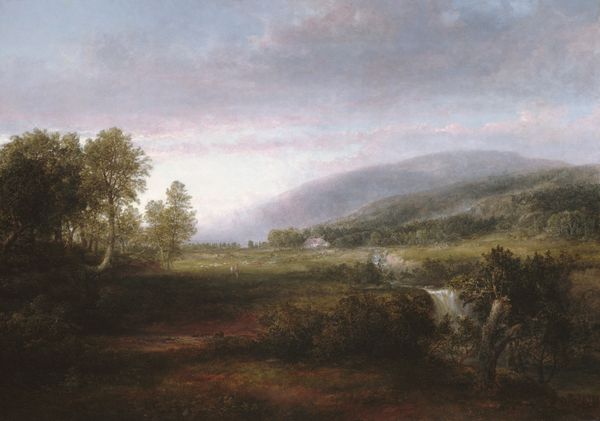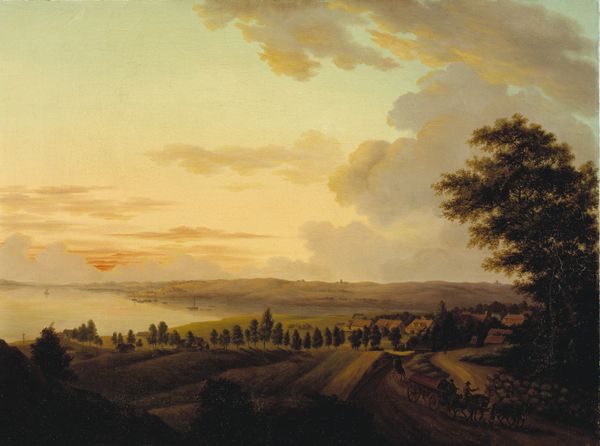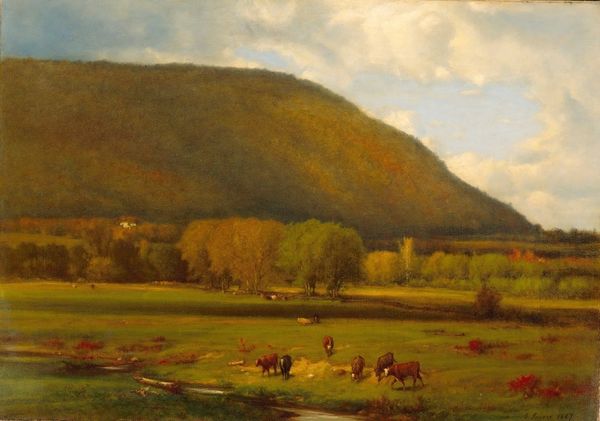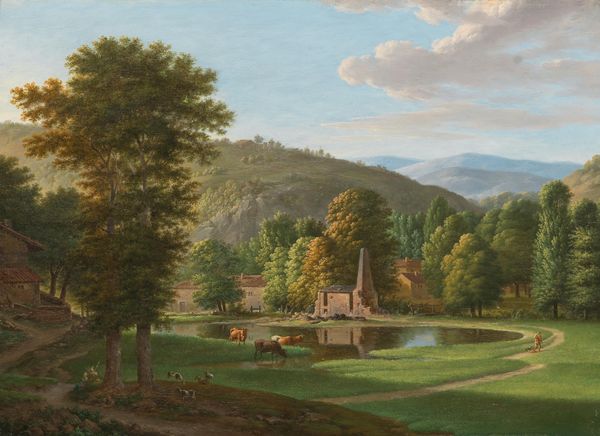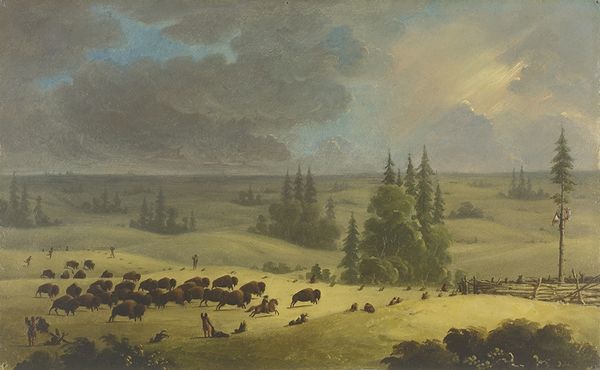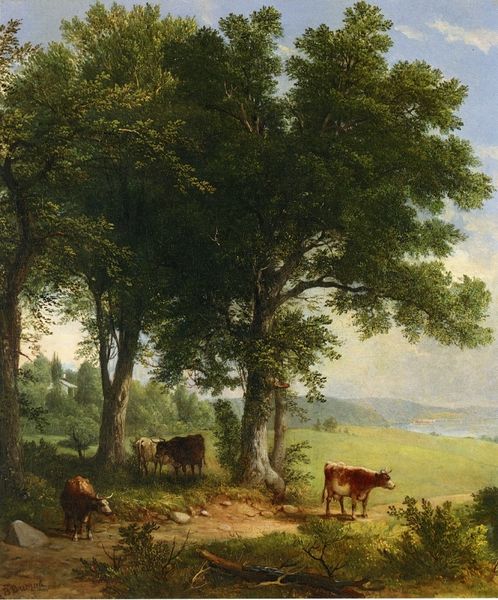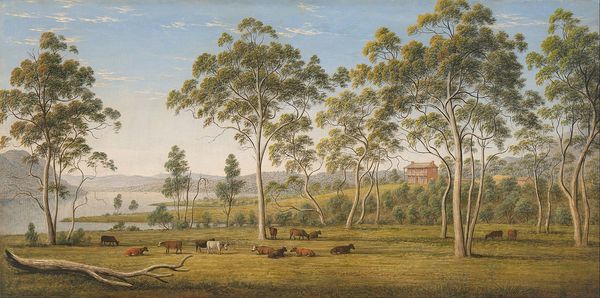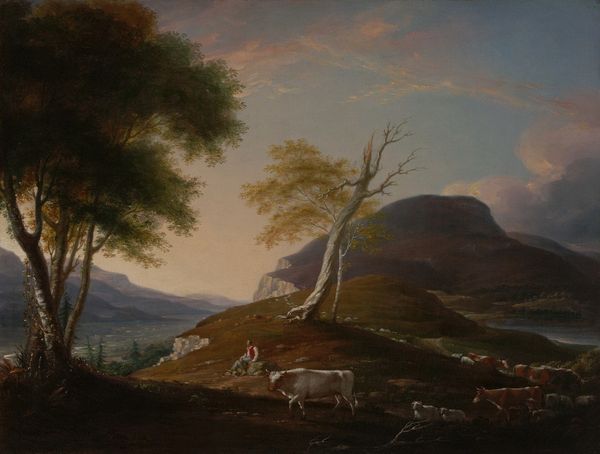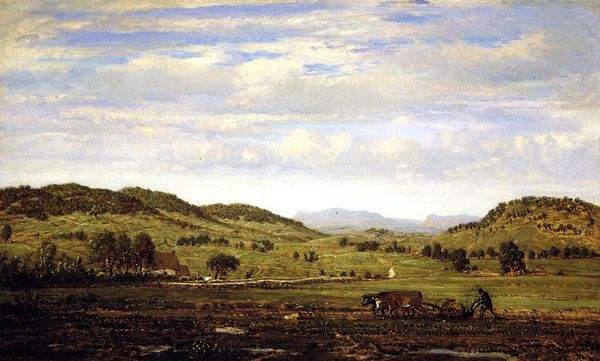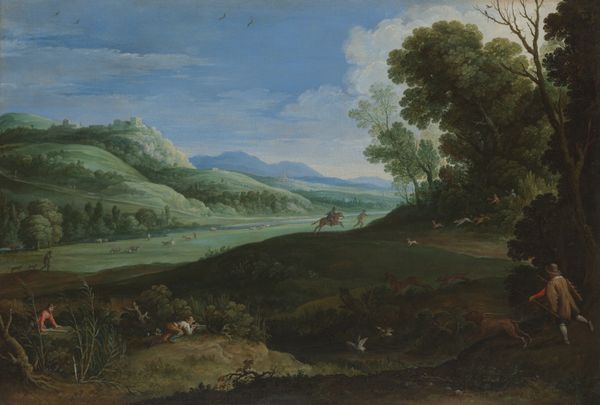
painting, plein-air, oil-paint
#
portrait
#
painting
#
plein-air
#
oil-paint
#
landscape
#
figuration
#
oil painting
#
romanticism
#
genre-painting
#
realism
Copyright: Public domain
John Glover, likely in the early nineteenth century, painted ‘Patterdale Farm’ to reflect the changing landscape of the Lake District in England. The painting encapsulates the visual codes of the picturesque movement, yet it also shows the economic transformation of rural England. The composition, with its framing trees and distant mountains, offers an idealized view. The presence of grazing cattle and a modest farmhouse suggests a harmonious relationship between humans and nature. However, this vision belies the agricultural and social changes sweeping through the region at the time. Enclosure acts were displacing rural populations, while new farming techniques were altering the very landscape that Glover depicts. Analyzing sources on agricultural history and land use, we can understand how Glover’s painting is not simply a neutral representation of the countryside, but a commentary on its changing social fabric. It prompts us to think about the public role of art in capturing and, perhaps, critiquing the evolving world.
Comments
No comments
Be the first to comment and join the conversation on the ultimate creative platform.
